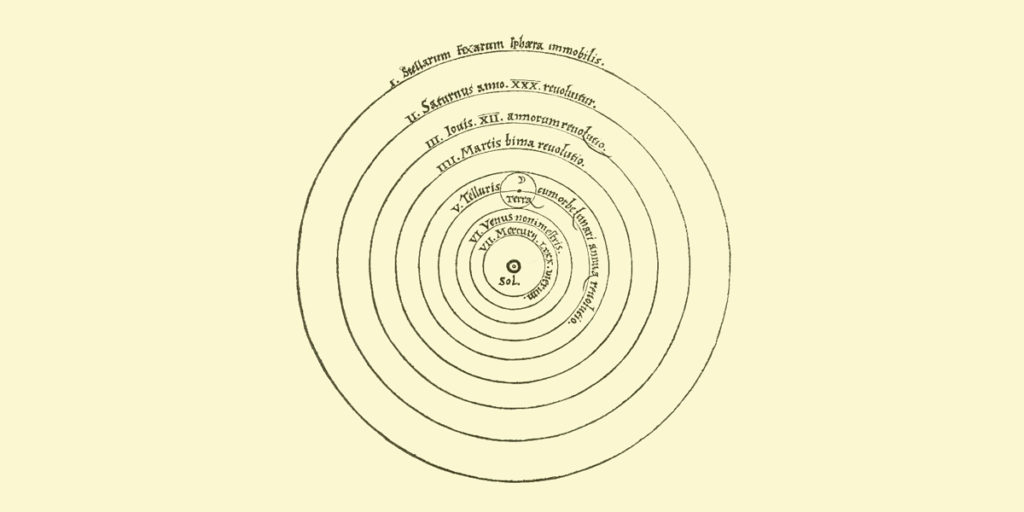
One of the ideas Frances Yates explores in Giordano Bruno and the Hermetic Tradition is the intersection between hermetism and heliocentrism.
I said a little while back that the hermetic universe was small and geocentric, which couldn’t be more wrong. Giordano Bruno in particular was really excited by heliocentrism. He felt it marked a spiritual shift and signaled the revival of the true ancient Egyptian religion which was oriented toward the Sun as the Second God or demiurge.
He also grasped the significance of heliocentrism for the size of the universe. If the Earth is in motion, but the background of stars does not appear to move, then that implies that the stars are much further away than people once thought. This was an enormous shock to people in the 16th and 17th centuries, as the revealed universe dwarfed the human perspective.
Bruno viewed himself as the prophet of this new spiritual dawn, which entailed the moral and religious reform of mankind.
In 1919 Charles Stansfeld Jones published an essay in Equinox III:1 called “Stepping out of the Old Aeon into the New” in which he said, “The Sun does not die, as the ancients thought; It is always shining, always radiating Light and Life. Stop for a moment and get a clear conception of this Sun, how He is shining in the early morning, shining at mid-day, shining in the evening, and shining in the night. Have you got this idea clearly in your minds? You have stepped out of the Old AEon into the New.”
But in his De Umbris Idearum of 1582, Bruno had already pointed out that the intellect does not cease to illuminate, and the visible sun does not cease to illuminate, just because we do not turn towards it. He intended this in a spiritual and not primarily physical sense.
The “New Aeon” was inaugurated in the 16th century, and its prophet was Bruno, not Crowley.
